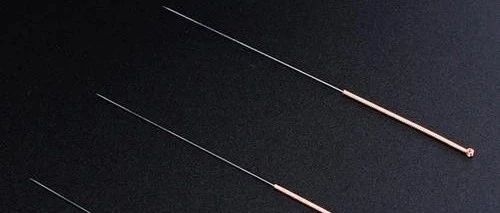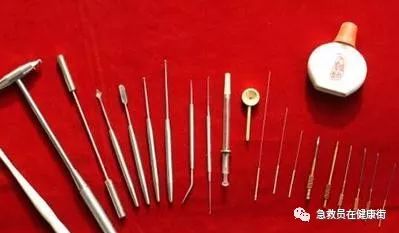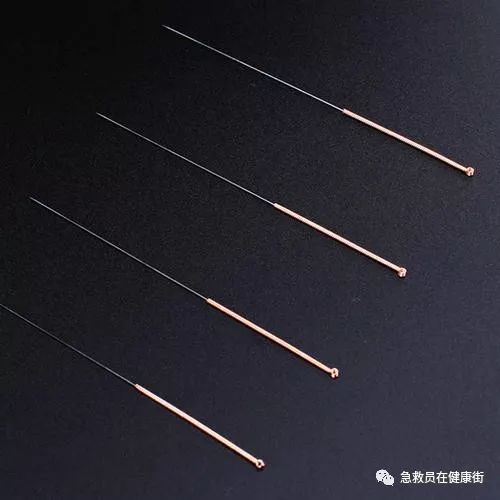
-
Filiform Needles
Edit Discussion
Filiform needle (毫针, háo zhēn) is made of metal, with stainless steel being the most commonly used material. Stainless steel filiform needles have high strength and toughness, a straight and smooth body, are heat-resistant and rust-proof, and are not easily corroded by chemicals, making them widely adopted in clinical practice. Other metals are also used to make filiform needles, such as gold and silver needles, which have significantly better conductivity and thermal properties than stainless steel needles. However, these needles are thicker, less strong and tough than stainless steel needles, and are expensive, thus they are less commonly used in clinical settings. Iron and ordinary steel needles are prone to rust, have poor elasticity, toughness, and durability, and are currently not used except occasionally in magnetic needle therapy.
-
Chinese Name
-
Filiform Needle
-
Foreign Name
-
Filiform Needle
-
Manufactured from
-
Metal
-
Such as
-
Gold needles, silver needles
Table of Contents
-
1 Structure
-
2 Specifications
-
3 Inspection
-
4 Storage
Structure
Edit

The structure of a filiform needle can be divided into five parts: the needle tip, needle body, needle root, needle handle, and needle tail.
The needle tip is the sharp end of the needle body, also known as the needle point; the needle body is the main part between the needle tip and the needle handle, also known as the needle shaft; the part connecting the needle body and the needle handle is called the needle root; the part of the needle body where the practitioner exerts force is called the needle handle; the end part of the handle is called the needle tail. The needle handle and tail are often wrapped with copper or silver wire, in a spiral or cylindrical shape, and the handle can come in various shapes such as loop handle, flower handle, flat handle, and tube handle. The main function of the needle handle is to facilitate force application, aiding in the insertion of the needle. The flower handle, also known as the coiling dragon needle, is thicker and is often used for fire needling, which helps dissipate heat and does not burn the hand during use.
Specifications
Edit
The specifications of filiform needles are primarily distinguished by the diameter and length of the needle body. Generally, in clinical practice, sizes 28 to 30 (0.32 to 0.38mm) and lengths of 1 to 2 inches (25 to 50mm) are most commonly used. Short needles are often used for ear acupuncture and shallow needling, while long needles are used for deep needling in areas with thick muscle and for certain points requiring transverse needling.
Inspection
Edit
Filiform needles are tools for treating diseases, and they must be inspected before use to avoid affecting the insertion and treatment outcomes. During inspection, attention should be paid to:
The needle tip should be straight and not skewed, rounded and not blunt, free of barbs, with high smoothness, and shaped like a “pine needle” to minimize resistance during insertion; the needle body should be smooth, straight, round, uniform, strong, and elastic; the needle root should be secure, without corrosion or scars.
The metal wire of the needle handle should be evenly wrapped, secure, and not loose or broken, and the length and thickness of the handle should be moderate for easy handling.
Storage
Edit
Proper storage of needles is essential to prevent damage to the needle tip, bending of the needle body, rust, or contamination. Therefore, needles should be stored properly. Storage devices include needle boxes, needle tubes, and needle clamps. If using a needle box or clamp, several layers of sterilized gauze can be placed, and the sterilized needles should be placed or inserted according to the length of the filiform needles, covered with sterilized gauze to prevent contamination, and then the needle box or clamp should be securely closed for future use.
Acupuncture and Related Terminology
< class=”title-folder” style=”color: rgb(19, 110, 194);background: url(https://mmbiz.qpic.cn/mmbiz_png/JAZDk3trmOORXhhI1nlyEEpUgotqodQV7m8LttBUDyRdA2o8dqHttfxKicibtMRsUmycBO1mGXibUuOWhlaEjS0Ig/640?wx_fmt=png) 3px -250px;border-radius: 2px;float: left;width: 17px;height: 17px;border-width: 1px;border-style: solid;border-color: rgb(250, 251, 252);margin-top: 5px;” title=”Expand”><
| ▪ Meridian Theory | ▪ Acupoint Theory | ▪ Needling and Moxibustion Techniques | ▪ Acupuncture Therapy | ▪ Experimental Acupuncture |
| ▪ Meridian Phenomena | ▪ Meridian Transmission | ▪ Meridian Diagnosis | ▪ Meridian Pathways | ▪ Acupoints |
| ▪ Acupoint Specificity | ▪ Acupoint Localization Methods | ▪ Surface Anatomy Localization Methods | ▪ Bone Measurement Localization Methods | ▪ Finger Measurement Localization Methods |
| ▪ Same Body Measurement | ▪ Middle Finger Same Body Measurement | ▪ Thumb Same Body Measurement | ▪ Horizontal Finger Same Body Measurement | ▪ Meridian Points |
| ▪ Extra [Odd] Points | ▪ Ah Shi Points | ▪ Specific Points | ▪ Back Shu Points | ▪ Front Mu Points |
| ▪ Source Points | ▪ Luo Points | ▪ Five Transport Points | ▪ Jing [Points] | ▪ Ying [Points] |
| ▪ Shu [Points] | ▪ Jing [Points] | ▪ He [Points] | ▪ Xie Points | ▪ Eight Meeting Points |
| ▪ Eight Extra Meeting Points | ▪ Meeting Points | ▪ Lower Meeting Points | ▪ Zhongfu | ▪ Yunmen |
| ▪ Tianfu | ▪ Xiabai | ▪ Chize | ▪ Kongzui | ▪ Lieque |
| ▪ Jingqu | ▪ Taiyuan | ▪ Yujie | ▪ Shaoshang | ▪ Shangyang |
< class=”title-folder title-folder-close” style=”color: rgb(19, 110, 194);background: url(https://mmbiz.qpic.cn/mmbiz_png/JAZDk3trmOORXhhI1nlyEEpUgotqodQV7m8LttBUDyRdA2o8dqHttfxKicibtMRsUmycBO1mGXibUuOWhlaEjS0Ig/640?wx_fmt=png) -15px -250px;border-radius: 2px;float: left;width: 17px;height: 17px;border-width: 1px;border-style: solid;border-color: rgb(250, 251, 252);margin-top: 5px;” title=”Expand”><
Other Terms
Tags:
-
Science, Discipline, History, Medicine
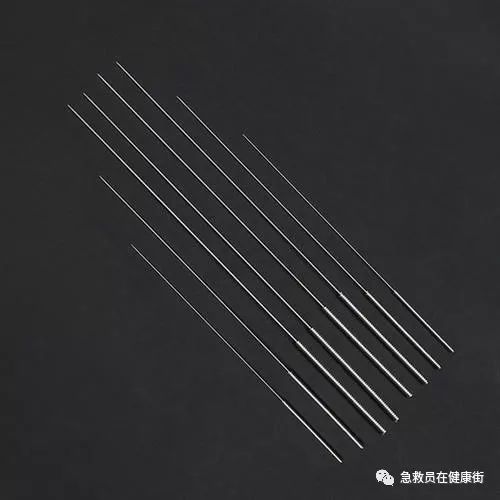
-
Filiform Needle Therapy
Edit
Filiform needle therapy, also known as “body needle therapy,” uses filiform needles as the acupuncture tool to perform specific operations on the acupoints along the fourteen meridians of the human body, to regulate the flow of Qi and blood, and to adjust the functions of the meridians and organs to treat related diseases. Filiform needle therapy is the most important and commonly used method in traditional acupuncture techniques, forming the core of needling therapy.
-
Chinese Name
-
Filiform Needle Therapy
-
Foreign Name
-
Nanomole
-
Also Known As
-
Body Needle Therapy
-
Meaning
-
Performing specific operations on acupoints
Table of Contents
-
1 Filiform Needle Therapy
-
2 Treatment Techniques
-
▪ Needle Insertion
-
▪ Needle Manipulation
-
▪ Needle Retention
-
▪ Needle Removal
-
3 Precautions
Filiform Needle Therapy
Edit
Filiform needle therapy involves inserting filiform needles (including sharp needles) into the surface acupoints or diseased areas to treat diseases. It is a commonly used needling therapy. Generally, needles with a body length of less than 2 inches (including 2 inches) are referred to as filiform needles. Needles with a body length of more than 3 inches (including 3 inches) are called sharp needles (also known as long needles). In fact, sharp needles are just longer than filiform needles, and their operational methods are similar. Inserting filiform needles into the corresponding areas can promote and adjust the flow of Qi and blood in the meridians, coordinate and restore the body’s Yin-Yang balance, achieving the goal of strengthening the body and expelling pathogens, preventing and treating diseases.
Treatment Techniques
Edit
The specific techniques applied in clinical practice include needle insertion, needle manipulation, needle retention, and needle removal.
Needle Insertion
This is the method of inserting the filiform needle into the skin. During insertion, both hands are generally used in coordination. The right hand holds the needle, using the thumb, index, and middle fingers to grip the needle handle, controlling the force, angle, and depth of insertion, known as the “inserting hand”; the left hand presses the acupuncture point or stabilizes the needle body to fix the skin at the acupoint, preventing the needle body from bending, and can avoid pain, facilitating the sensation of needling, known as the “pressing hand.”
① Specific methods of needle insertion include finger cutting insertion, gripping insertion, stretching insertion, and pinching insertion. Finger cutting is suitable for short needles, gripping is suitable for long needles, stretching is suitable for relaxed skin areas (such as the abdomen), and pinching is suitable for thin skin areas (such as the head and face).
② Insertion angle: This refers to the angle formed between the needle body and the skin surface. Clinically, when the needle body is perpendicular (90°) to the skin at the acupoint, it is called vertical insertion, suitable for thick muscle areas such as limbs, abdomen, and waist. When the needle body is at an angle of about 45° to the skin, it is called oblique insertion, suitable for thin muscle areas or acupoints with important internal organs that should not be deeply inserted. When the needle body is at an angle of 15° to 25°, it is inserted along the skin, suitable for thin muscle areas (such as the head and face), and this method can also be used for one needle to penetrate two acupoints, known as transverse or along-skin insertion.
③ Needle depth: This refers to how deep the needle body enters beneath the skin. Generally, it should achieve the sensation of needling without damaging important internal organs. In addition to determining based on the characteristics of the acupoint, clinical practice requires flexible mastery. For example, thin individuals should be shallowly inserted, while obese individuals should be deeply inserted; elderly, weak, and children should be shallowly inserted, while young and strong individuals should be deeply inserted; Yang conditions, exterior conditions, and early-stage diseases should be shallowly inserted, while Yin conditions, interior conditions, and chronic diseases should be deeply inserted; areas with thin muscle such as the head, face, and chest should be shallowly inserted, while areas with thick muscle such as limbs, buttocks, and abdomen should be deeply inserted; fingers and toes should be shallowly inserted, while elbows, arms, and knees should be deeply inserted. The angle and depth of insertion are related; generally, deep insertion is often done with vertical insertion, while shallow insertion is often done with oblique and transverse insertion. Special care should be taken with acupoints near the spine, major arteries, and eye areas to avoid injury.
Needle Manipulation
Also known as needling technique. After the filiform needle is inserted, this refers to the operations performed to obtain, maintain, and enhance the sensation of needling (also known as obtaining Qi).
Needle Retention
After obtaining Qi during needle manipulation, this refers to the method of leaving the needle body in the acupoint for a period of time. If Qi is not obtained after manipulation, needle retention can be used to wait for Qi to arrive, which is called waiting for Qi. If Qi has been obtained during manipulation, needle retention can maintain the sensation and enhance the therapeutic effect. During needle retention, further manipulation can also be performed to strengthen the sensation and allow it to flow along the meridian. The duration of needle retention depends on specific circumstances. For Yin conditions, cold conditions, and interior conditions, where the disease is long-standing and the pathogenic Qi is deep, and the body is strong, longer retention is advisable; for Yang conditions, heat conditions, and exterior conditions, where the disease is short and the pathogenic Qi is superficial, and the body is weak or in children, shorter retention is advisable, or even no retention. For stubborn, painful, or spasmodic conditions, and for comatose or shock patients, longer retention is advisable. Generally, the retention time is 15 to 30 minutes.
Needle Removal
This refers to the method of withdrawing the needle body from the body after manipulation or retention when the treatment requirements have been met. During removal, first, the left hand uses disinfected cotton balls to press around the needle hole, while the right hand gently twists and slowly lifts the needle until it is beneath the skin, finally completely withdrawing the needle from the body. After removal, it is important to quickly press the needle hole with a disinfected cotton ball to prevent bleeding, also known as the “pressing method.” After removal, it is also possible not to press the needle hole, allowing the pathogenic Qi to escape, which is a method of tonifying and draining, belonging to the draining method of opening and closing. After removal, the number of needles should be checked to avoid missing any, and the patient should be advised to rest for a moment and keep the area clean.
Precautions
Edit
All conditions treatable by acupuncture therapy can also be treated with filiform needle therapy. The main precautions include:
① The practitioner must be focused and cautious during needling, constantly observing the patient’s expressions, inquiring about their feelings, and noting their reactions to gauge the situation after needling, striving to control the amount of stimulation.
② Patients should not undergo needling when hungry, fatigued, or overly stressed. For patients who are thin, Qi-deficient, or blood-deficient, the needling technique should not be too forceful, and a lying position should be preferred.
③ For pregnant women, needling should not be too vigorous, and the sensation should not be too strong. Acupoints in the lumbar and lower abdomen, as well as points such as Laogong, Yongquan, Xingjian, Taichong, and Shixuan, should not be needled.
④ For infants with unclosed fontanelles, acupoints on the top of the head should not be needled.
⑤ Caution should be exercised when needling patients with bleeding disorders, terminal chronic diseases, or critically ill patients with unclear diagnoses.
⑥ Acupoints located in the chest, sides, waist, and back should not be needled deeply or directly. Special attention should be paid to patients with liver or spleen enlargement and emphysema. Acupoints in the eye area and those such as Fengfu and Yamen on the top of the head, as well as acupoints along the spine, should also be carefully approached to avoid significant movements, twisting, or prolonged retention to prevent injury to important tissues and organs, which could lead to severe adverse consequences.
⑦ For patients with urinary retention, when needling acupoints in the lower abdomen, appropriate direction, angle, and depth should be observed to avoid accidental injury to the bladder and other organs.
-
References
-
1.< class=”gotop anchor” data-linktype=”2″ name=”refIndex_1_136244″ style=”color: rgb(102, 102, 102);width: 15px;height: 14px;overflow: hidden;background: url(https://mmbiz.qpic.cn/mmbiz_png/JAZDk3trmOORXhhI1nlyEEpUgotqodQVbf2CsfX03GsiaVJicBZWS6XangbibQNn2bqY0XOciaRdGOzdw58MwynUnA/640?wx_fmt=gif) 0px -14px no-repeat;display: inline-block;margin-right: 4px;float: left;margin-top: 3px;” title=”Jump Up”> Introduction to Traditional Acupuncture Techniques: Filiform Needle Method
-
Academic Papers
Content from

-
Tao Shanping, He Tianfeng, Luo Yongbao, et al. Observation on the Efficacy of Fire Needle Combined with Filiform Needle in Treating Knee Osteoarthritis. 《 Shanghai Acupuncture Journal 》 , 2013
-
Ma Xinping, Li Haiyan. Observation on the Efficacy of Fire Needle Combined with Filiform Needle in Treating Cervicogenic Headache. 《 Chinese Journal of Emergency Medicine 》 , 2008
-
Ma Xinping, Li Jingcao, Jiang Yan. Observation on the Efficacy of Fire Needle Combined with Cupping and Filiform Needle in Treating Postherpetic Neuralgia. 《 Chinese Journal of Emergency Medicine 》 , 2010
-
Li Haiyan, Zheng Yuqin. Clinical Observation of Fire Needle and Medicinal Cupping Combined with Filiform Needle in Treating Herpes Zoster. 《 Chinese Journal of Emergency Medicine 》 , 2013
-
Tao Xiaoyan, Zhang Caichun, Yang Jinliang, et al. Clinical Observation of Filiform Needle Treatment for Myopia in Adolescents. 《 Modern Clinical Chinese Medicine 》 , 2006
-
View All
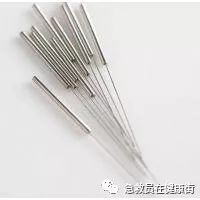
Specifications of Filiform Needles
I will answer
Share
ReportViewed 2500 times
Tip The answers under this question are contributed by netizens and are for reference only.
2 answers
#Emotions# For parents who do not approve, would you dare to marry?
 Zhou Xiaodaoer From Baidu Zhidao Certification Team 2019-01-02
Zhou Xiaodaoer From Baidu Zhidao Certification Team 2019-01-02
The specifications of filiform needles are primarily distinguished by the diameter and length of the needle body. Generally, in clinical practice, sizes 28 to 30 (0.32 to 0.38mm) and lengths of 1 to 2 inches (25 to 50mm) are most commonly used. Short needles are often used for ear acupuncture and shallow needling, while long needles are used for deep needling in areas with thick muscle and for certain points requiring transverse needling.
Stainless steel filiform needles have high strength and toughness, a straight and smooth body, are heat-resistant and rust-proof, and are not easily corroded by chemicals, making them widely adopted in clinical practice.
The structure of a filiform needle can be divided into five parts: the needle tip, needle body, needle root, needle handle, and needle tail.
Turn Left|Turn Right
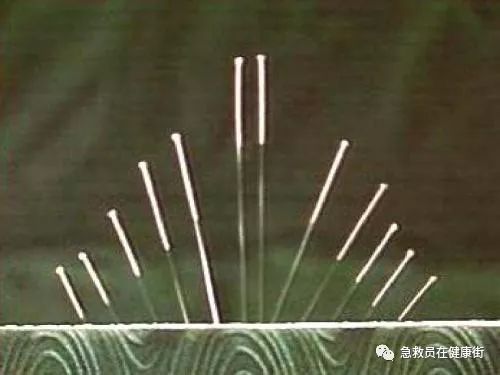
Extended Information:
1. Filiform needles are tools for treating diseases, and they must be inspected before use to avoid affecting the insertion and treatment outcomes.
During inspection, attention should be paid to: the needle tip should be straight and not skewed, rounded and not blunt, free of barbs, with high smoothness, and shaped like a “pine needle” to minimize resistance during insertion; the needle body should be smooth, straight, round, uniform, strong, and elastic; the needle root should be secure, without corrosion or scars.
2. Proper storage of needles is essential to prevent damage to the needle tip, bending of the needle body, rust, or contamination. Therefore, needles should be stored properly.
Reference: Baidu Encyclopedia – Filiform Needle
5 3
Comments
Share
ReportCollapse

 Arthur977 Recommended on 2017-11-26
Arthur977 Recommended on 2017-11-26
The specifications of filiform needles are primarily distinguished by the diameter and length of the needle body. Generally, in clinical practice, sizes 28 to 30 (0.32 to 0.38mm) and lengths of 1 to 2 inches (25 to 50mm) are most commonly used. Short needles are often used for ear acupuncture and shallow needling, while long needles are used for deep needling in areas with thick muscle and for certain points requiring transverse needling.
Turn Left|Turn Right
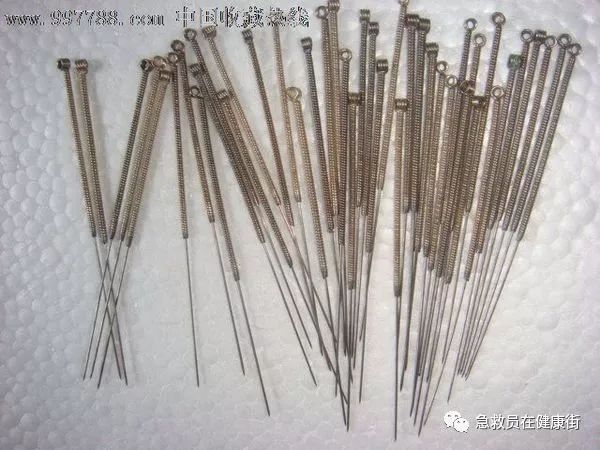

Introduction to Filiform Needles
2018-07-20 16:16 Medical Education Network
|
Size
The Medical Education Network has compiled relevant content for the Traditional Chinese Medicine Acupuncture Practitioner Examination, with the following explanation of filiform needles, hoping to assist candidates.
Filiform needle (毫针, háo zhēn) is made of metal, with stainless steel being the most commonly used material. Stainless steel filiform needles have high strength and toughness, a straight and smooth body, are heat-resistant and rust-proof, and are not easily corroded by chemicals, making them widely adopted in clinical practice. Other metals are also used to make filiform needles, such as gold and silver needles, which have significantly better conductivity and thermal properties than stainless steel needles. However, these needles are thicker, less strong and tough than stainless steel needles, and are expensive, thus they are less commonly used in clinical settings. Iron and ordinary steel needles are prone to rust, have poor elasticity, toughness, and durability, and are currently not used except occasionally in magnetic needle therapy.

Filiform Needle [ háo zhēn ]
Vocabulary
Basic Definition Detailed Definition
-
[ háo zhēn ]
-
A needle used for acupuncture points, classified into several models based on thickness and length.
Encyclopedic Definition
Error
Filiform needle (毫针, háo zhēn) is made of metal, with stainless steel being the most commonly used material. Stainless steel filiform needles have high strength and toughness, a straight and smooth body, are heat-resistant and rust-proof, and are not easily corroded by chemicals, making them widely adopted in clinical practice. Other metals are also used to make filiform needles, such as gold and silver needles, which have significantly better conductivity and thermal properties than stainless steel needles. However, these needles are thicker, less strong and tough than stainless steel needles, and are expensive, thus they are less commonly used in clinical settings. Iron and ordinary steel needles are prone to rust, have poor elasticity, toughness, and durability, and are currently not used except occasionally in magnetic needle therapy. View Encyclopedia
Note: The encyclopedic definition comes from Baidu Encyclopedia, edited by netizens.
English Translation
-
Acupuncture needle


